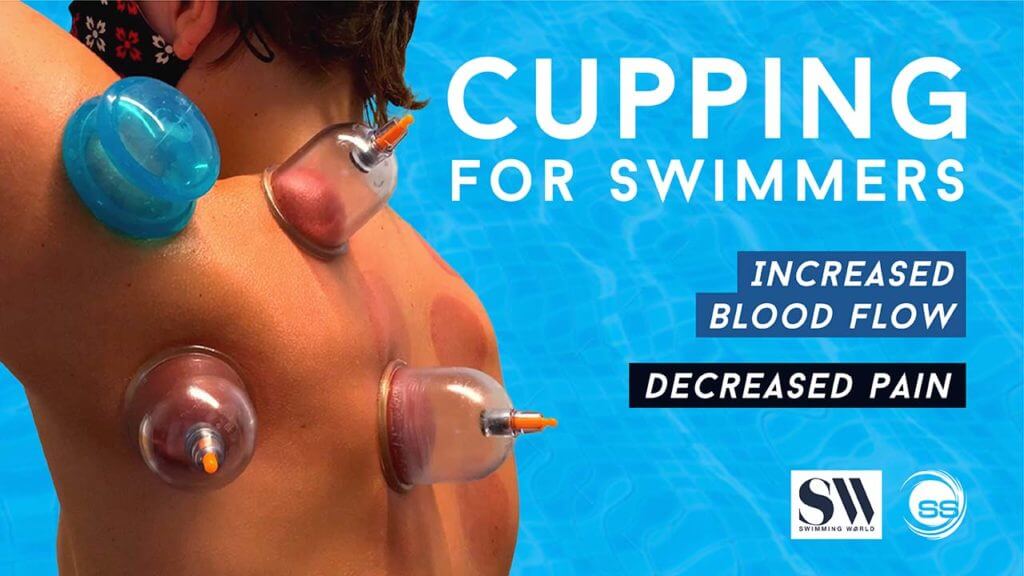Swimmer Strength Tech Tip: Cupping for Competitive Swimmers

If you’ve never tried cupping before, it’s important you try it out, either on the performance or recovery side of things. Personally, I would respond well to it, but feel crummy in the water for the next day or two afterward. On the flip side, some people feel great right after. So, it’s important that you try it for yourself to see how your body responds. The most important thing to know is that cupping alone does not make a difference. The cause of the pain or muscle spasm must be addressed from a strength and mobility perspective as well. It is a great tool for you to use to work on some of the kinks to feel better temporarily and start to improve how you move in the water.
The biggest way cupping makes a difference is through our nervous systems. And here are the main mechanisms for how cupping works and what makes you feel better:
Watch video
Pain Control
For instance, if your shoulder is in pain, your shoulder sends signals to the brain and keeps feeding the cycle. By putting stimulus on there (cups) that signal can get flooded. With cupping, that becomes a pressure stimulus. Other ways we can flood that system would be with vibration or with a massage or light touch. Think of it as stubbing your chin on a coffee table. Typically, we end up rubbing that area to dilute the pain, or flood the pain and makes it feel better.
Increased Parasympathetic Nervous System
When we train all the time, we get an elevation in sympathetic stimulus synonymous with the fight or flight response. This is where muscles get very tight. Similarly, dealing with an injury forces muscles to tighten up and guard the areas. The cupping mechanism helps to suppress the sympathetic drive and increase the parasympathetic drive to enter a more relaxed state.
Vasodilation/Local Inflammation
With the cupping techniques, it promotes blood vessels to dilate and also for local inflammation to occur to help bring all of the metabolites from working out day in and day out. This helps to flush the system.
Authored by Dr. Nick Hadinger – www.ptstreamline.com
Video by Coach Deniz Hekmati – www.swimmerstrength.com
Deniz Hekmati provides regular content on strength and conditioning as Swimming World’s dryland contributor.
See more videos from Swimmer Strength Coach Deniz Hekmati:
Swimmer Strength Tech Tip: Age to Start Dryland Training or Strength Training
Swimmer Strength Tech Tip: When to Add Weight to Strength Training
Swimmer Strength Tech Tip: McGill 3 Core Exercises
Swimmer Strength Tech Tip: Shoulder Pain
Swimmer Strength Tech Tip: Yoga and Swimming
Swimmer Strength Tech Tip: Foam Rolling for Swimmers
Swimmer Strength Tech Tip: Self-Myofascial Release
Note: All swimming and dryland training and instruction should be performed under the supervision of a qualified coach or instructor, and in circumstances that ensure the safety of participants



